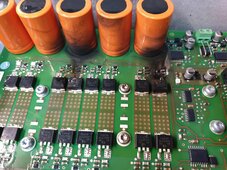Hi, I've done a search to see if there's any one familiar with repairing circuit boards on Sunny Island inverters, with no luck so far.
Are boards available as a spare part?
I've been asked to fix an S18.OH-11 which has a heap of shorted mosfets ... F2907ZS ... and wondered if it's a common problem or if it should just be retired.
Thanks for any help.
Are boards available as a spare part?
I've been asked to fix an S18.OH-11 which has a heap of shorted mosfets ... F2907ZS ... and wondered if it's a common problem or if it should just be retired.
Thanks for any help.

Last edited:




